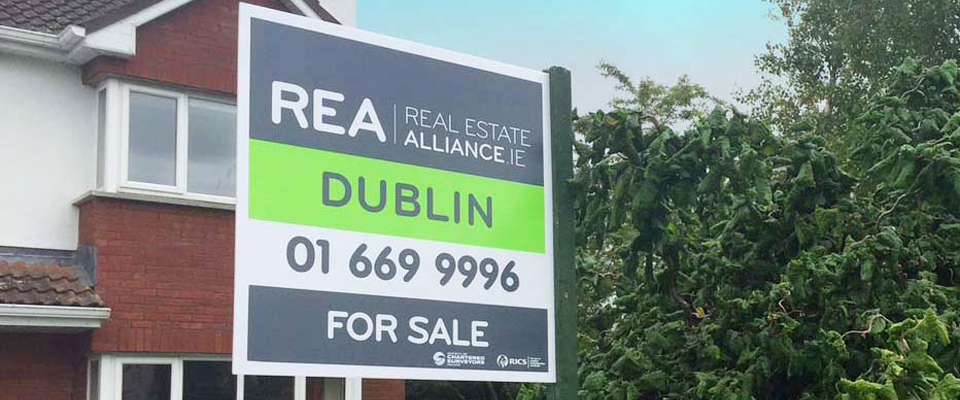The average three bed semi-detached house nationally has risen by 3.1% to €221,843 since June, the Q3 REA Average House Price Survey has found.
The REA Average House Price Survey concentrates on the up-to-date actual sale price of Ireland's typical stock home, the three-bed semi, giving a real-time picture of the property market in towns and cities countrywide to the close of last week.
Overall, the average house price across the country has risen by 11.2% over the past 12 months – just under twice the 6% increase registered to the full year to September 2016.
The average three-bed semi-detached home in Dublin city’s postcode districts has jumped in value by €17,000 in the three months to the end of September, and now costs an average of €431,500.
The 4.1% rise over the last quarter means that prices in the capital’s postcode areas have increased by 15.6% over the past year, with properties selling in an average of four weeks after hitting the market.
“Supply is the main driver of these continuing price rises with our agents reporting that the volume of listings is down around the country,” said REA spokesperson Healy Hynes.
"In what is becoming a vicious circle, families looking to trade up are not seeing the larger homes becoming available while empty nesters looking to downsize do not have a ready supply of smaller homes emerging on the market.
“To complete the equation, first-time buyers are not seeing the three-bed semis coming through in sufficient numbers.
“Although planning permissions rose by 55% year-on-year in Q2, the 3,630 houses approved will not be on the market for the next two years, and even then this year’s overall figure will be less than half is what is required on an annual basis.
“Looking at the supply figures, it could be 2020 before we see any normalisation in the marketplace.
“Our agents are reporting that where there are new builds coming on stream, the market is extremely active and the first-time buyer is opting to pay a premium of 15-20% higher than the second-hand rate.
“This is having a knock-on effect into the second-hand market with a more discerning buyer now concentrating heavily on energy ratings.
“Where the price is right, we are seeing a good flow of credit into the market, with cash buyers now just making up 20% of the commuter market and sales in Dublin and surrounding counties closing in just four weeks – down from an average of seven a year ago.”
The commuter counties continued to rebound after a relatively static 2016 and saw an increase of 2.7% this quarter, with the average house now selling for €229,300.
However, once again the influence of house pricing relative to the deposit threshold is illustrated in a 4.7% rise in Meath where the average is €234,375 almost twice the percentage increase registered in Kildare (1.8%) and Wicklow (2.4%) where average house prices are above the €260,000 mark.
The commuter flight has once again spread as far as Laois where REA Seamus Browne reports a €10,000 increase in average prices over the past three months as buyers leave Dublin and Kildare in the quest for suitable housing at the right price.
The slowest growth nationwide was registered in the main cities outside of Dublin, as while Galway at €255,000 (up 4.1%) and Limerick at €190,000 (up 2.7%) showed growth, Cork city prices remained static over the three-month period, and just 5.1% up on the year.
The country’s smaller rural towns situated outside of Dublin, the commuter belt and the major cities out-performed the national index with prices rising by an average of 2.8% over the quarter to €142,867.
House prices in Longford have risen by 32% in the past year – but the county still has the cheapest semi-detached houses in the country at an average of €90,000, up from €68,000 in September 2016.
Longford, Leitrim (€97,000) and Donegal (€93,750) are the three counties where properties can be still be purchased for a five-figure sum.
Despite the absence of sterling buyers because of Brexit and the exchange rate, prices in some parts of Donegal have risen by an average of €6,250 since June, fuelled by an acute lack of supply of suitable properties.
Brexit is having an unusual effect on the rental market in West Cork where former sterling buyers are now opting to rent on a long-term basis, creating added pressure on an under-supplied market, according to REA Celtic Properties.







